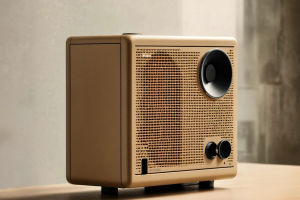Spotting the real ceramic deal made by human hands can be tricky. With so many products labeled as "handmade" these days, it's easy to get confused.
Don’t worry—this guide will help you spot the signs of skilled craftsmanship, especially in ceramics, so you can shop with confidence and find truly unique pieces.
1. Thickness and Feel
Why handcrafted ceramics are usually thicker
One of the first things to notice is the weight and thickness of the item. Handcrafted ceramics are typically thicker than those made by machines. This isn't just for looks—it also means they're more durable. Each piece has its own balance and feel, which you can sense when you hold it.
Durability through design
The added thickness helps the object resist chips and minor bumps. Mass-produced pieces, on the other hand, are made to be thin and uniform, making them more prone to damage.
2. Brushwork and Decoration
Look for visible brushstrokes
A key sign of manual decoration is the brushstroke. When an object is painted by hand, especially in large areas of color, the movement of the brush is often visible. These marks can show flow, texture, and even a little rhythm from the artist's hand.
Different from stenciled or printed designs
If the surface looks too smooth or the design too perfect, it may have been made using templates or screen printing methods. These lack the subtle imperfections that give hand-painted items their charm.
3. Unique Decoration Details
Inconsistencies that add value
With real handcrafted work, decorations are never exactly the same. Small changes in color tones, line thickness, or positioning are a natural part of the process. These elements add personality and make each piece special.
Look closely at the patterns
If a design has slight irregularities—like lines that aren't perfectly straight or colors that shift slightly—it likely wasn't made by a machine. These are not flaws; they're part of the beauty.
4. Consistency Versus Character
Every item has its own signature
Even when the same design is applied across multiple items, handcrafted goods show individual character. One plate may have brighter colors, while another may be slightly more glossy or matte.
That's because handmade pieces respond to changes in paint dilution, brush pressure, placement in the kiln, and cooking temperature.
No two are truly identical
It's important to expect variation. Uniformity is a trait of factory-made products. True craftsmanship brings out the uniqueness of every creation.
5. Shape and Symmetry
Irregularity as a badge of skill
Slight differences in shape or curves are strong signs of something made by hand. A perfect circle or flawlessly straight edge is more likely to come from a machine. A handcrafted item might be a bit asymmetrical, and that's not a problem—it's a feature.
Every piece is one-of-a-kind
Imagine a group of handmade oil jars. Even if created using the same method, each one will have small differences. These details reflect the effort and time taken in making them.
Shopping Online? Here's What Helps
Research matters
Shopping online for handcrafted goods adds a layer of challenge. Images can be touched up, and descriptions might not be entirely accurate. When in doubt, check reviews and look into the maker's online presence.
Social media and customer feedback can give insights into the quality and authenticity of the product.
Watch for over-polished photos
If a product looks too perfect in every image, it might not be handmade. Real artisanal pieces often come with their own little surprises—something that adds charm, not takes away from it.
Conclusion: Small imperfections tell a big story
Handcrafted items stand out because of their uniqueness. These objects carry subtle marks that reflect the hands and skills behind them. Each detail, from a visible brushstroke to a slight curve in the shape, adds to its personality and value.
So, Lykkers, next time you're shopping, remember these simple tips. Look for the signs that something was made with care, creativity, and time. By doing so, you're not just buying a product—you're supporting real skill and meaningful craftsmanship.


